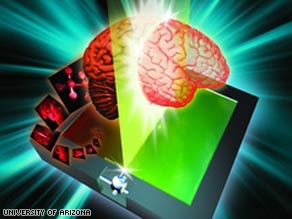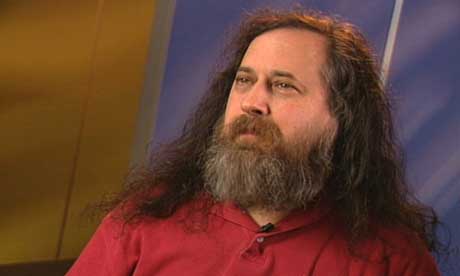East African Savana : Animals
During the walk in the Savannas, I could spot few Animals too. But since I was on foot, and had less time, could not see most of them from near.

First mammals we spotted were Gazelles. The Thomson's gazelle (
Eudorcas thomsoni). They were very far from us.







After moving forward, we saw Zebra's. I guess they were The Plains zebra (
Equus quagga, formerly
Equus burchelli). There were many of them and were slowly moving away as we approaced them.


On the horizon we could spot some Giraffe (
Giraffa camelopardalis) .


There was another type of Gazelles. I think they were The Grant's Gazelle (
Nanger granti). It disappeared behind the trees.



There were a few wildebeest too, among a group of zebras at a distance, but could not approach them.





On the way back, from the vehicle, I could see the wildebeests from near and I think they were The Blue Wildebeest (
Connochaetes taurinus).
In a short time that I managed, I could see lot of things I feel.
Labels: Africa, Animals, biodiversity, Kenya, travel, wildlife
East African Savanna : Birds
In October 2008, I got an opportunity to spend some time in East African Savanna. I was in Kenya, about 50 miles away from Nairobi. The place was, couple of kilometers off “Trans African Highway” which connects Cairo in Egypt to Cape Town in South Africa.
I was there for 5 days, but busy with meeting and hardly got time to go out of compound. But on last day, finally I took opportunity to walk out and explore a bit.
During my stay, I saw few birds, I could not identify them all, but I thought I will share the pictures anyway, and request for help from you to help me identify them.

These sparrow like birds were commonly seen and were nesting on medium trees, like weavers. There call was resembling Indian Mynas. The
White-browed Sparrow-weaver (
Plocepasser mahali




There were colonies of Weaver Birds. I presume they are
Speke's Weaver (Ploceus spekei). The males were busy building nests.



There were several trees having these nests.


One more bird, The
Superb Starling (
Lamprotornis superbus). Really very active bird.


And this looks like The
Northern Pied-babbler (
Turdoides hypoleuca) .
Thanks to Alka for Ids.
More bird pictures to come.
Labels: Africa, biodiversity, Birds, Kenya, travel, wildlife
Internet use 'good for the brain'
For middle aged and older people at least, using the internet helps boost brain power, research suggests.
A University of California Los Angeles team found searching the web stimulates centres in the brain that control decision-making and complex reasoning.
The researchers say this might even help to counter-act the age-related physiological changes that cause the brain to slow down.
The study features in the American Journal of Geriatric Psychiatry.

Areas activated by reading a book in the brain of an experienced web user
As the brain ages, a number of changes occur, including shrinkage and reductions in cell activity, which can impact on performance.
It has long been thought that activities which keep the brain active, such as crossword puzzles, may help minimise the impact - and the latest study suggests that surfing the web can be added to the list.
 Web use stimulates much more activity in the same brain |
Lead researcher Professor Gary Small said: "The study results are encouraging, that emerging computerized technologies may have physiological effects and potential benefits for middle-aged and older adults.
"Internet searching engages complicated brain activity, which may help exercise and improve brain function."
The latest study was based on 24 volunteers aged between 55 and 76. Half were experienced internet users, the rest were not.
Compared with reading
Each volunteer underwent a brain scan while performing web searches and book-reading tasks.
Both types of task produced evidence of significant activity in regions of the brain controlling language, reading, memory and visual abilities.
However, the web search task produced significant additional activity in separate areas of the brain which control decision-making and complex reasoning - but only in those who were experienced web users.
 Brain activity in web newcomers: similar for reading and internet use |
The researchers said that compared with simple reading, the internet's wealth of choices requires that people make decisions about what to click on in order to get the relevant information.
However, they suggested that newcomers to the web had not quite grasped the strategies needed to successfully carry out a web search.
Professor Smith said: "A simple, everyday task like searching the web appears to enhance brain circuitry in older adults, demonstrating that our brains are sensitive and can continue to learn as we grow older."
Rebecca Wood, chief executive of the Alzheimer’s Research Trust, said: "These fascinating findings add to previous research suggesting that middle-aged and older people can reduce their risk of dementia by taking part in regular mentally stimulating activities.
"Older web users - 'silver surfers' - are doing precisely this.
"Frequent social interactions, regular exercise and maintaining a balanced diet can also reduce dementia risk."
Dr Susanne Sorensen, head of research at the Alzheimer's Society, said: "Use it or lose it may well be a positive message to keep people active but there is very little real evidence that keeping the brain exercised with puzzles, games or other activities can promote cognitive health and reduce the risk of dementia."
Story
Labels: internet, research
Holographic television to become reality
LONDON, England (CNN) -- Picture this: you're sat down for the Football World Cup final, or a long-awaited sequel to the "Sex and the City" movie and you're watching all the action unfold in 3-D on your coffee table.

The future of television? This image is an impression of what 3D holographic television may look like.
It sounds a lot like a wacky dream, but don't be surprised if within our lifetime you find yourself discarding your plasma and LCD sets in exchange for a holographic 3-D television that can put Cristiano Ronaldo in your living room or bring you face-to-face with life-sized versions of your gaming heroes.
The reason for renewed optimism in three-dimensional technology is a breakthrough in rewritable and erasable holographic systems made earlier this year by researchers at the University of Arizona.
Dr Nasser Peyghambarian, chair of photonics and lasers at the university's Optical Sciences department, told CNN that scientists have broken a barrier by making the first updatable three-dimensional displays with memory.
"This is a prerequisite for any type of moving holographic technology. The way it works presently is not suitable for 3-D images," he said.
The researchers produced displays that can be erased and rewritten in a matter of minutes.
To create television sets the images would need to be changing multiple times each second -- but Peyghambarian is very optimistic this can happen.
He said the University of Arizona team, which is now ten-strong, has been working on advancing hologram technology since 1990 -- so this is a major step forward. He believes that much of the difficulty in creating a holographic set has now been overcome.
"It took us a while to make that first breakthrough, but as soon as you have the first element of it working the rest often comes more rapidly," he said. "What we are doing now is trying to make the model better. What we showed is just one color, what we are doing now is trying to use three colors. The original display was four inches by four inches and now we're going for something at least as big as a computer screen."
There are no more great barriers to overcome now, he said.
The breakthrough has made some long-time researchers of the technology believe that it could now come to fruition.
Tung H. Jeong, a retired physics professor at Lake Forest College outside Chicago who had studied holography since the 1960s told NJ.com; "When we start talking about erasable and rewritable holograms, we are moving toward the possibility of holographic TV ... It has now been shown that physically, it's possible."
And what might these holographic televisions look like?
According to Peyghambarian, they could be constructed as a screen on the wall (like flat panel displays) that shows 3-D images, with all the image writing lasers behind the wall; or it could be like a horizontal panel on a table with holographic writing apparatus underneath.
So, if this project is realized, you really could have a football match on your coffee table, or horror-movie villains jumping out of your wall.
Peyghambarian is also optimistic that the technology could reach the market within five to ten years. Peyghambarian is also optimistic that the technology could reach the market within five to ten years. He said progress towards a final product should be made much more quickly now that a rewriting method had been found.
However, it is fair to say not everyone is as positive about this prospect as Peyghambarian.
Justin Lawrence, a lecturer in Electronic Engineering at Bangor University in Wales, told CNN that small steps are being made on technology like 3-D holograms, but, he can't see it being ready for the market in the next ten years.
"It's one thing to demonstrate something in a lab but it's another thing to be able to produce it cheaply and efficiently enough to distribute it to the mass market," Lawrence said.
Yet, there are reasons to be optimistic that more resources will be channeled into developing this technology more quickly.
The Japanese Government is pushing huge financial and technical weight into the development of three-dimensional, virtual-reality television, and the country's Communications Ministry is aiming at having such technology available by 2020.
Peyghambarian said there are no major sponsors of the technology at present, but as the breakthroughs continued, he hopes that will change.
Even if no major electronics company commit themselves, there is hope that backers could come from outside of the consumer electronics industry, he said.
"It could have some other applications. In training it's useful to show people three-dimensional displays. Also it would be good to show things in 3-D for defense command and control and for surgery," he said.
Story
Labels: Gizmo
Cloud computing is a trap, warns GNU founder Richard Stallman
Web-based programs like Google's Gmail will force people to buy into locked, proprietary systems that will cost more and more over time, according to the free software campaigner

Richard Stallman on cloud computing: "It's stupidity. It's worse than stupidity: it's a marketing hype campaign." Photograph: www.stallman.org
The concept of using web-based programs like Google's Gmail is "worse than stupidity", according to a leading advocate of free software.
Cloud computing – where IT power is delivered over the internet as you need it, rather than drawn from a desktop computer – has gained currency in recent years. Large internet and technology companies including Google, Microsoft and Amazon are pushing forward their plans to deliver information and software over the net.
But Richard Stallman, founder of the Free Software Foundation and creator of the computer operating system GNU, said that cloud computing was simply a trap aimed at forcing more people to buy into locked, proprietary systems that would cost them more and more over time.
"It's stupidity. It's worse than stupidity: it's a marketing hype campaign," he told The Guardian.
"Somebody is saying this is inevitable – and whenever you hear somebody saying that, it's very likely to be a set of businesses campaigning to make it true."
The 55-year-old New Yorker said that computer users should be keen to keep their information in their own hands, rather than hand it over to a third party.
His comments echo those made last week by Larry Ellison, the founder of Oracle, who criticised the rash of cloud computing announcements as "fashion-driven" and "complete gibberish".
"The interesting thing about cloud computing is that we've redefined cloud computing to include everything that we already do," he said. "The computer industry is the only industry that is more fashion-driven than women's fashion. Maybe I'm an idiot, but I have no idea what anyone is talking about. What is it? It's complete gibberish. It's insane. When is this idiocy going to stop?"
The growing number of people storing information on internet-accessible servers rather than on their own machines, has become a core part of the rise of Web 2.0 applications. Millions of people now upload personal data such as emails, photographs and, increasingly, their work, to sites owned by companies such as Google.
Computer manufacturer Dell recently even tried to trademark the term "cloud computing", although its application was refused.
But there has been growing concern that mainstream adoption of cloud computing could present a mixture of privacy and ownership issues, with users potentially being locked out of their own files.
Stallman, who is a staunch privacy advocate, advised users to stay local and stick with their own computers.
"One reason you should not use web applications to do your computing is that you lose control," he said. "It's just as bad as using a proprietary program. Do your own computing on your own computer with your copy of a freedom-respecting program. If you use a proprietary program or somebody else's web server, you're defenceless. You're putty in the hands of whoever developed that software."
Story
You may also like to read
Labels: Cloud Computing, google, internet, IT




















 Vijay Barve
Vijay Barve


























